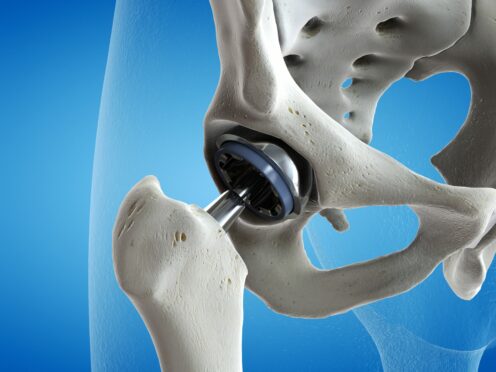
Scientists are investigating a link between metal hip replacements and heart failure.
The researchers are working with orthopaedic surgeons in Glasgow to discover why some patients who have undergone the joint replacements using metal devices go on to develop changes in their hearts.
Evidence so far points to the use of cobalt in the artificial joints.
The cardiovascular scientists are looking to see why the metal has sheared off through wear and tear and travelled to patients’ hearts, putting them at risk of cardiac failure.
Dr Susan Currie, of Strathclyde University’s Institute of Pharmacy and Biomedical Sciences, says cobalt and chromium leeched by the metal joints is affecting the calcium needed to make hearts contract and pump blood around the body efficiently.
The associate professor in cardiovascular physiology said: “This happens when there is shearing off with metal on metal as the patient moves. This is the shearing of metal deposits of cobalt and chromium.
“It is important to understand why cobalt is having this effect. Cobalt travels in the blood to the heart where it is believed to impact on calcium needed for healthy heart contraction to pump blood around the body.
“We are looking at different cell types in the heart and the effect cobalt is having on calcium.
“If we can identify a protein that changes very early on as the heart starts to react to cobalt, doctors may be able to give drugs to prevent progression to heart failure. Cobalt is believed to travel in the blood and can be taken up by the cells in the heart. It is difficult to predict who will be affected by this as while some are, many are not.”
The goal is to identify markers in patients at risk then monitor them for heart problems.
More than 50,000 Scots have had metal hip replacements. They were stopped around 2016 because some failed earlier than expected.
Research team member Mark Jenkinson, a consultant orthopaedic surgeon at Queen Elizabeth University Hospital, said: “Of those whose blood samples we looked at, 10% had changes to their hearts.
“We asked them if the samples could be examined by Dr Currie’s team at Strathclyde in the hope of finding a common biomarker and intervening earlier to monitor and treat any changes to their hearts.
“Patients with high levels of cobalt are considered for hip replacements to remove the metal joints with ceramic or polyurethane ones.”
The research has a £150,000 grant from Heart Research UK. The charity said: “Identifying patients at risk early and preventing heart failure is vital.
“The study is looking at whether there is a link between cobalt exposure and changes in the levels and activity of a particular heart protein known as CaMKII.
“This protein has a central role in regulating heart function and we already know that the levels and activity of this protein change at an early stage of heart disease.
“They will also look at whether they can interfere with CaMKII, to reduce or reverse the damaging effects of cobalt on the heart.”

Enjoy the convenience of having The Sunday Post delivered as a digital ePaper straight to your smartphone, tablet or computer.
Subscribe for only £5.49 a month and enjoy all the benefits of the printed paper as a digital replica.
Subscribe